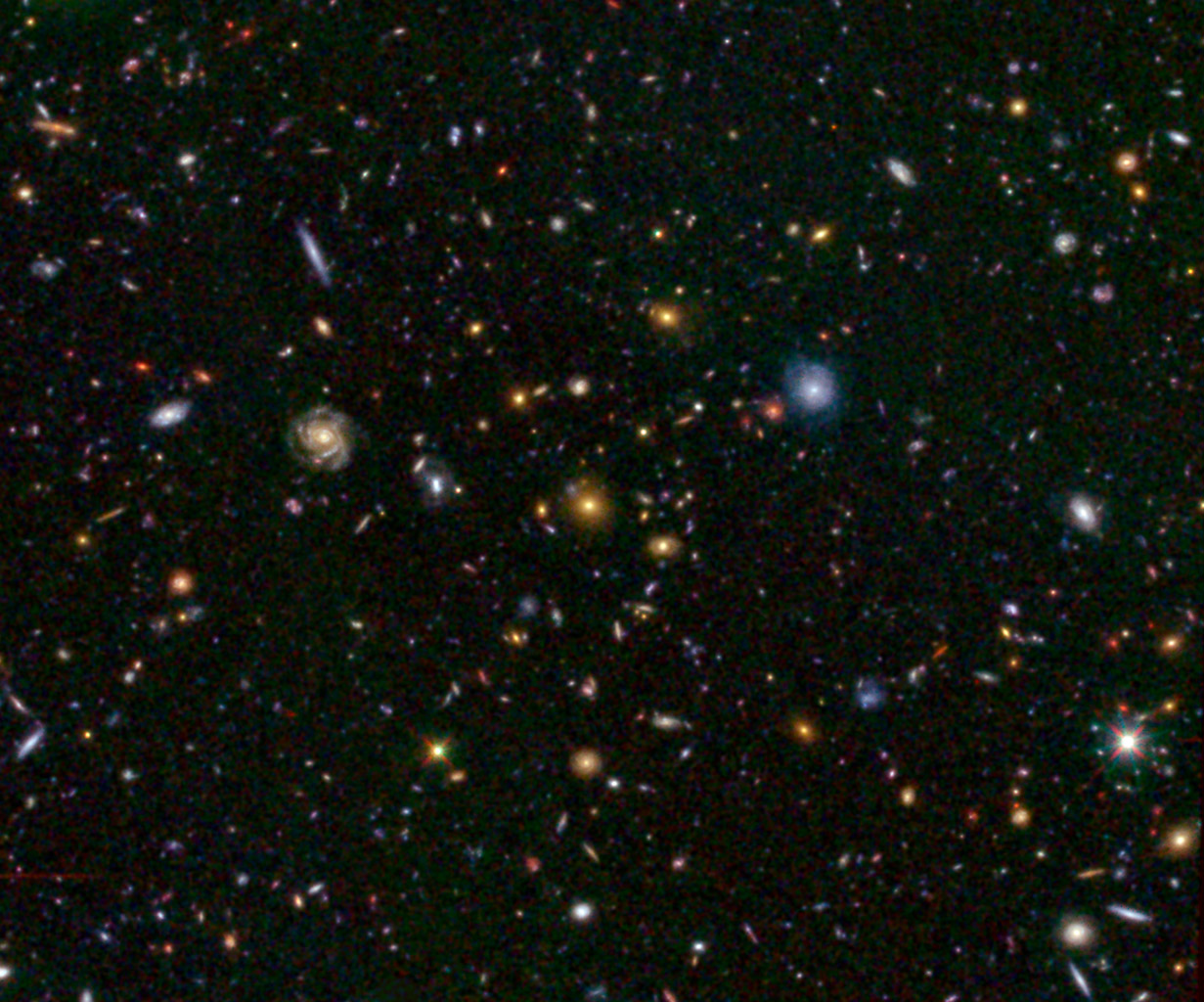Physicist: Quite.
This is a surprisingly subtle question. The problem is, we can’t see the entire universe. Imagine standing in a vast prairie or floating on a ship at sea. Looking around you see a lot of the same stuff, about the same everywhere, and extending to the edge of your vision.

There’s a limit to what we can see. The “edge” of the visible universe is a “horizon”. There’s probably a lot more of the universe beyond that horizon, but it officially doesn’t matter.
The “edge” at the limit of your vision is the horizon. Something moving away from you is visible until it gets to the horizon and then it disappears (starting at the bottom). On Earth, the effects of the horizon come from the ground physically blocking your view. Spacetime horizons are a bit different, but they share one important commonality with our Earthly horizon; if you go to where the horizon is, you don’t notice anything special.
The spacetime horizon you’re most likely familiar with is the “event horizon” of a black hole, forming the “surface”. The event horizon is the limit beyond which nothing can escape (including light, which is how black holes earn their name). Something above the horizon is visible and, perhaps with great effort, can escape to meet an outside observer. Anything below the event horizon is gone forever.
The event horizon is not just a boundary in space, it is in some sense a boundary in time. Someone falling into a black hole shouldn’t notice anything too exciting at the event horizon. Extreme gravity and the terrifying knowledge that your falling into a black hole notwithstanding, passing through the event horizon shouldn’t be something that really stands out to you.
The lower something is in a gravity well, the less it experiences time. We can directly measure the effect due to Earth’s gravity (at microseconds per mile up per year, it’s usually not worth worrying about). At the event horizon of a black hole this slowing effect reaches it’s natural extreme, and time stops. If you watch something falling into a black hole, it appears to move slower and slower as it approaches the horizon, until its last moment, just before passing through the horizon, are stretched out infinitely. Things only emit so much light in a given moment and forever is a long time (so far), so things falling in appear very slow and very dim. You won’t see things actually get to the horizon and stop, you’ll see them get close and then fade quickly from view. There is some moment that never quite comes and the time until that moment stretches out forever.
Light released just prior to the moment of passing through the horizon will eventually escape to an observer. Light release just after will not. The cosmological event horizon is remarkably similar. It’s presently about 16 billion light years away, in every direction.
The cosmological horizon is caused by the expansion of the universe. You can picture this as being like ants crawling on a balloon. As the balloon expands only ants that are close to each other will be able to run into each other; more distant ants can crawl at each other at full speed, but the expansion will add more rubber between them than their movement subtracts. If something moving away from us passes through the horizon, then the last light it emits before crossing the horizon will take forever to get to us.
The universe hasn’t existed forever and a lot of stuff has happened in its history, so the oldest light we can see doesn’t come from close to the cosmic event horizon. Even so, the same slowing/reddening effect is visible to the naked eye.

A lot of galaxies in a very small corner of the sky. Most of the color difference comes from “cosmological redshift”; the redder a galaxy is, the farther away it is.
The first galaxies date to when the universe was a bit under an billion years old, with a redshift of a bit under ten, meaning that light coming from them is ten times as stretched out and the galaxies appear to be experiencing time at a tenth the usual rate. The oldest light we can see is the cosmic microwave background, which has been traveling for 13 billion years and redshifted by a factor of 1100. We can’t see any farther with light; the CMB is like the blue of the sky, completely overwhelming the sky behind it.
So if you were standing 16 billion light years away, at the present location of the cosmological event horizon (from Earth’s perspective), you wouldn’t see anything too surprising. The universe looks more or less the same everywhere. You could send a signal to Earth, but you’d be in the most frustrating possible place to do it: just close enough that the signal will make it, but just far enough that it will take literally forever. If anyone on Earth ever saw you (in the extreme future), you’d appear frozen in time and invisibly dim.
In the mean time, the expansion of the universe doesn’t just cause the horizon to exist, it constantly forces things to fall beyond it. We won’t ever directly see things fall beyond the horizon for the same frustrating reason we won’t see things quite fall into black holes. Like things approaching the event horizon of a black hole, extremely distant things get redder, and slower, and fade from view while never quite reaching some prescribed moment.
So there’s no real “edge” to the universe. Just like the horizon on Earth, the cosmic event horizon is a regular place. Being like everywhere else, there’s nothing to notice. Nothing really happens when you cross it. Technically, some astronomy nerd sixteen billion light years away can point out that once you cross each others horizons, you no longer have the option to send each other messages.
The “out in a field” picture is from here.







17 Responses to Q: How big is the universe? What happens at the “edge”?